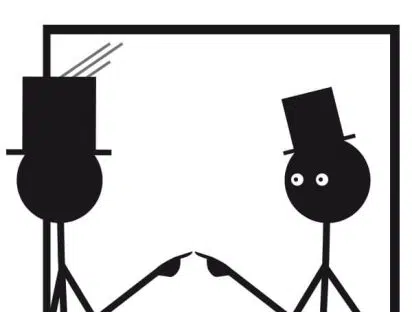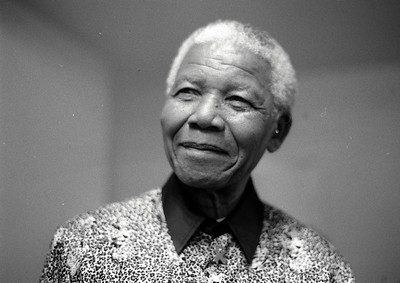 There are close links between the concepts of outbreak, or epidemic, and corruption. The language bears witness to this. While epidemic and corruption do not have the same etymology – “epidemic” comes from the Greek epidemos: “who sojourns in a country,” “corruption” from corrumpere: “to destroy, to annihilate, to alter, physically or morally” (1) – the word “corruption” is often associated with terms used in connection with the word “disease,” such as “endemic” or “gangrene.” Alongside these lexical connections, corruption and epidemic are related through causal links. Some of these links have been put forward to explain the birth and development of the coronavirus. We will discuss them in this article, where we will see that corruption can also be associated with a concept derived from biology: that of symbiosis.
There are close links between the concepts of outbreak, or epidemic, and corruption. The language bears witness to this. While epidemic and corruption do not have the same etymology – “epidemic” comes from the Greek epidemos: “who sojourns in a country,” “corruption” from corrumpere: “to destroy, to annihilate, to alter, physically or morally” (1) – the word “corruption” is often associated with terms used in connection with the word “disease,” such as “endemic” or “gangrene.” Alongside these lexical connections, corruption and epidemic are related through causal links. Some of these links have been put forward to explain the birth and development of the coronavirus. We will discuss them in this article, where we will see that corruption can also be associated with a concept derived from biology: that of symbiosis.
1. Corruption may have contributed to the coronavirus epidemic
Two causal links between corruption and the coronavirus outbreak have been identified. The first relates to illegal wildlife trade. It has been proposed as a hypothesis by Gretta Fenner and Monica Guy in a post on the FCPA Blog (2). For reasons that will appear later, it is worth quoting them at length:
“Initial investigations point the finger at a person that ate a snake that ate a bat that harbored the virus. But other scientists question the hypothesis […]. Those who inhabit the murky underworld of wildlife trade may well have detailed supply chain records – illegal wildlife trade is an organized crime after all – but they aren’t inclined to reveal these to investigators.
It’s happened before. Remember SARS, sparked by the trade in wild civet cats? The scourge of Ebola, still ongoing, where it may have been a monkey and not a snake that ate the bat? These epidemics originate in the no man’s land between legal and illegal trade, where bushmeat and suspicious packages travel long distances on commercial routes with the help of bribes and legal loopholes.
The trade in illegal wildlife products is valued at up to $23 billion per year, and it continues at a breathless pace. Wild animals and animal products are traded at markets like the one in Wuhan right across East and Southeast Asia [the Chinese city where the coronavirus emerged].
The problem is that hygiene and veterinary controls designed to stop the transmission of inter-species diseases, and to prevent diseases from crossing borders, cannot be applied to smuggled wildlife and wildlife goods. They are also not enforced in the places where these goods are traded, often alongside legal wildlife. Corruption plays a big role in this.” (3)
The second causal link is somewhat downstream, at the beginning of the coronavirus epidemic. Corruption is said to have fostered its development, not as a direct cause, but indirectly, because local officials were afraid of being accused of corruption. According to Professor Sam Crane, interviewed in the Guardian about the situation in China:
“The country’s authoritarian bureaucracy offers officials few incentives to be proactive, and many to attempt to hide emerging crises. If we consider not only Sars in 2003 but also large-scale disasters like the Songhua River contamination in 2005 and the Wenzhou train crash in 2011, and we could add other incidents, we see a pattern of denial and cover-up and evasion on the part of local leaders. [They are] afraid of being associated with ‘problems’ that could reflect badly on their personal careers and create headaches for higher level leaders. […] Many local cadres now live in fear of being called out for corruption and thus more likely to hide problems.” (4)
2. The interface between the legal and the illegal
These two excerpts evoke the concept of symbiosis. Admittedly, the word is not used in the previous excerpts. But in the first text, Fenner and Guy highlight a murky world, supply chains, the no-man’s-land between legal and illegal trade, and the coincidence of legal and illegal trade in wildlife. And in the second text, Crane presents an inverted picture, in which the fear of being associated with the “murky world” Fenner and Guy speak of is dominant, to which patterns of denial, cover-up and evasion are applied. Why do these considerations refer to the idea of symbiosis? Derived from the Greek sumbiōsis, “living together, comradeship,” symbiosis refers to “[t]he lasting association between two or more organisms and beneficial to each of them” (5). More broadly, according to the French Encyclopédie Universalis, it “concerns all forms of interspecific relations, from mutually beneficial union to parasitic antagonism.” The word “symbiosis” also has a figurative meaning: “In a close community of ideas and interests.” This, it seems, is where corruption comes into play. Does it not imply a community of interests between a corrupter and a corrupted person? No doubt, but the concept of symbiosis has been applied literally not only to corruption, but also to transnational criminal activities. Let’s consider the definition from the Encyclopédie Universalis once again:
“In its broadest sense, the concept of symbiosis concerns all forms of interspecific relations, from mutually beneficial union to parasitic antagonism.”
Two extreme forms are distinguished here. The first assumes that mutual benefit is derived from cooperation between two living beings of different species. It corresponds to mutualism. The second extreme form is parasitism, which refers to the situation where one of the living beings lives at the expense of the other. Professor of Criminology Nikos Passas has distinguished these two extreme forms in order to construct a typology of transnational criminal activities. In a text published in 2002, Passas noted that, in this field, “there are complex and diverse relationships between criminals and respected actors,” before proposing a typology of these “complex and diverse relationships” (6). What interests him here are the “interfaces” between the world of legality and the world of illegality, the spaces in which these two worlds communicate. These interfaces fall into two broad categories. The first includes “antithetical relations,” which bring together actors with opposing interests. Passas distinguishes three sub-categories, one of which, described as “parasitical,” refers to a situation in which the illegal party aims to “preserve the viability of the [legal] target, such that illegal benefits can be extorted on a more or less regular basis.”
3. Symbiosis between legal and illegal actors
The second category of interface between the legal and the illegal is called “symbiotic.” Passas justifies the use of this term by explaining that relations between criminal and legitimate actors respond to supply and demand mechanisms:
“A widespread belief is that when legal and illegal actors come into contact, it is because criminals seek to infiltrate, extort, or bankrupt legal enterprises. Nevertheless, there is accumulating evidence of symbiotic relations between them. It is worth reiterating that illegal markets operate because there is a demand for what they offer. Very often their clients are conventional and respected actors (users of illegal narcotics, prostitution services, gambling, etc.).”
This time, Passas distinguishes eight sub-categories (7). Three of them are worth exploring here because of their direct relationship with the idea of symbiosis. First, “collaboration.” In this case, “legal and illegal enterprises or actors work actually together for the commission of the same offense.” Passas gives the example of “various types of professionals – such as lawyers, politicians, accountants, bankers or casino managers – who knowingly offer their services to criminal operators or organizations.” Next, “reciprocity.” This is close to mutualism, because it covers a mode of collaboration characterized by “consciously mutual benefits between the legal and illegal actors.” Passas points out that this sub-category “this type includes possibly the most common interface, whereby legitimate or conventional actors are the clients for goods and services offered by criminals (e.g., drugs, gambling, weapons, prostitutes, etc.).” Finally, “synergy,” which Passas refers to as “systemic.” According to him, “we can speak of systemic synergy when legal and illegal actors benefit each other while they go about their business independently promoting their interests and objectives.” There is no agreement between legal and illegal actors, nor is there a direct customer-supplier relationship. This form of symbiosis is possible because of structural factors. The following examples are proposed by Passas:
“The legitimate actors merely reap benefits from others’ criminal activities. For example, banks and other financial institutions in the West may be receiving from overseas substantial funds that are proceeds of crime. In such cases, the laundering has taken place elsewhere, and intermediary transactions have hidden the traces of illegality. In the chemical industry, companies benefit from the operations of networks illegally disposing toxic waste. If there is conspiracy to do so, we have a case of outsourcing; if not […] we have a case of synergy.”
4. Symbiotic corruption and illegal wildlife trade
In an article published in 2017, Daan van Uhm and William Moreto applied the Passas typology to corruption in the specific context of illegal wildlife trade (8). After recalling that “many crimes are regularly intertwined with other activities, including legal and other illegal undertakings,” they observe that “collaboration between legal and illegal actors highlights the role of reciprocity within the legal and illegal domain, particularly through the use of social and informal ties.” This observation is confirmed by the empirical evidence they collected through a qualitative survey conducted between 2012 and 2014 in Uganda, Morocco, China and Russia. The overall conclusion of the survey is that the Passas typology provides a relevant analytical framework for understanding corruption in the illegal wildlife trade. But let’s look at the case of China, which van Uhm and Moreto report on in a few paragraphs. According to their synthesis, in order to grasp the interfaces between the legal and illegal areas, we must refer to the practice of guanxi, the “system of social networks and influential relationships which facilitate business and other dealings” (9). Van Uhm and Moreto noted the importance of these personal and informal networks in wildlife trade activities:
“Family, cultural and ethnic ties play an important role in different stages in the wildlife trade in China. Business partners would preferably belong to the same ethnic Chinese group from the same region and social ties with family and friends would guarantee the secure network. Our findings suggest that social ties with officials occur frequently in the illegal wildlife trade. For example, border officials take advantage of their privileged access to confiscated wildlife contraband to obtain goods that they can sell to contacts involved in traditional Chinese medicine. For such informal reciprocal agreements, guanxi was acknowledged as a vital determinant as to whether individuals would collaborate with one another.”
However, it is not easy to make a pronouncement. Firstly, because of the fact, mentioned above, that corruption implies demand. And this demand is not only local: it is also, for example, fuelled by tourists who bring home objects made with animal products from illegal wildlife trafficking (10). Secondly, it is well known that many of the practices falling under the concept of corruption in the sense of international law (which Passas considers in constructing his typology) have cultural settings. Van Uhm and Moreto noted this in relation to the four countries in which they conducted their survey. But if one refers to this dimension in an explanatory sense, it implicitly acknowledges that, far from being limited to the practice of corruption, the “cultural settings” fulfil different social and economic functions. Beyond these caveats, however, the idea of symbiotic corruption, taken in a literal sense, is disturbing. For the mechanisms underlying symbiosis are robust in nature. Applied to human societies, they maintain this “murky” world of intertwined interests, personal ties and forced loyalties, against which the fight is, in practice, particularly difficult. Alain Anquetil (1) Sources (in French): CNRTL and Dictionnaire historique de la langue française Le Robert. (2) “FCPA” refers to the “Foreign Corrupt Practices Act.” See the FCPA Blog. (3) “Did corruption cause the deadly coronavirus outbreak?,” FCPA Blog, 30 January 2020. (4) “Help or hindrance? How Chinese politics affected coronavirus response,” 31 January 2020, (5) Sources (in French): Dictionnaire historique de la langue française Le Robert and CNRTL. (6) N. Passas, “Cross-border crime and the interface between legal and illegal actors,” in P. C. van Duyne, K. von Lampe & N. Passas (eds), Upperworld and underworld in cross-border crime, Wolf Legal Publishers, 2002. (7) The eight sub-categories are as follows: Outsourcing, Collaboration, Co-optation, Reciprocity (or “even exchanges”), (Systemic) Synergy, Funding relationships, “Legal Interactions,” and “Legal actors committing organized crimes.” (8) D. P. van Uhm & W. Moreto, “Corruption within the illegal wildlife trade: A symbiotic and antithetical enterprise,” British Journal of Criminology, 58(4), 2018, pp. 864-885. (9) Source: Lexico.com, Oxford Dictionaries. (10) See (in French) “Stop au pillage des espèces par les touristes,” Planetoscope.com. [cite]




